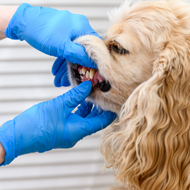NatureScot updates gull control licensing guidance
Lesser black-backed gulls are among the species which have declined in number.
The number of licences issued to control gulls in Scottish towns and cities during breeding season is expected to be reduced, after NatureScot updated its licensing guidance.
The guidance has been clarified to ensure applicants are aware that licences to destroy the nests or eggs of gulls, relocate chicks or, as a very last resort, kill gulls, will only be issued in cases where there are clear public health and safety issues that cannot be resolved otherwise.
The move follows a decline in numbers of all five breeding species of gull in Scotland. Last year’s Seabirds Count census, led by the Joint Nature Conservation Committee, revealed a significant drop in gull populations since the previous census in 2000. The black-headed gull saw the biggest decline, with numbers down by 75 per cent. Even the herring gull, which saw the smallest drop, still declined by 44 per cent.
Avian influenza has had a significant effect on gull numbers in the last couple of years, with changes in land use and food availability also having an impact.
Liz McLachlan, NatureScot’s licensing manager, said: “Our role is to balance the conservation and protection of species with public interests such as safeguarding people from health and safety risks. To make sure we get that balance right, it’s vital that our licences take into account the latest science and evidence.
“The ongoing declines in gull species in Scotland reported in the latest seabird census is very concerning. That’s why we are taking steps to ensure everyone is aware of our licensing approach, to ensure that populations are protected, and where possible restored, while health and safety risks to the public are minimised.”
Image © Lorne Gill/NatureScot



 The WSAVA has invited veterinary professionals to a webinar on responsible antibiotic usage in dentistry.
The WSAVA has invited veterinary professionals to a webinar on responsible antibiotic usage in dentistry.